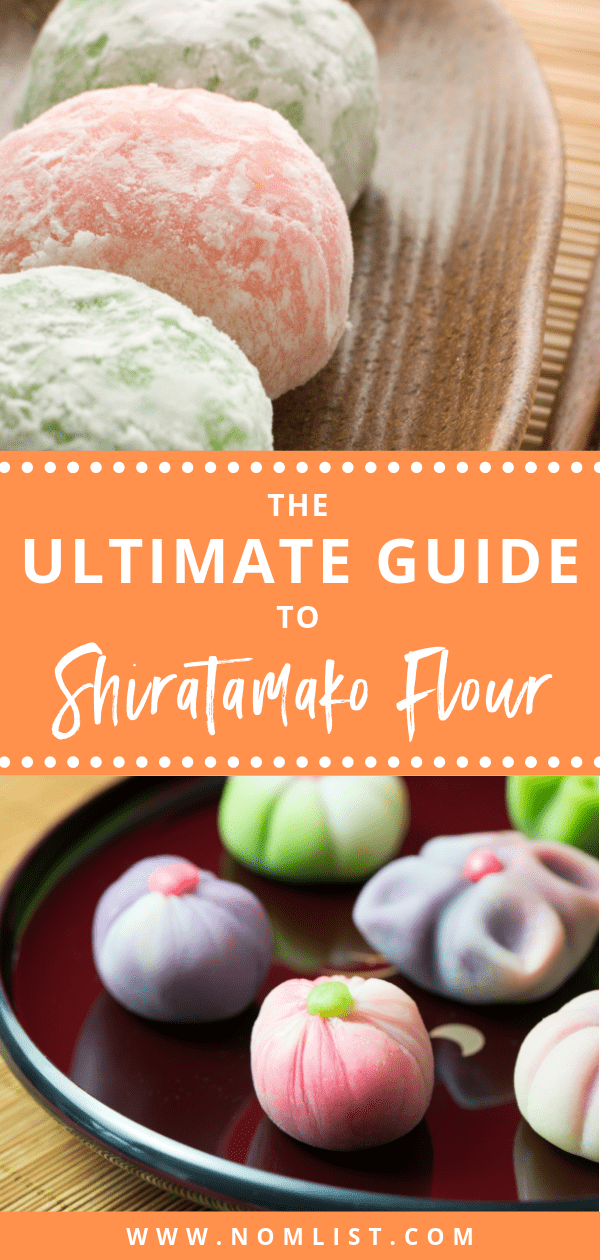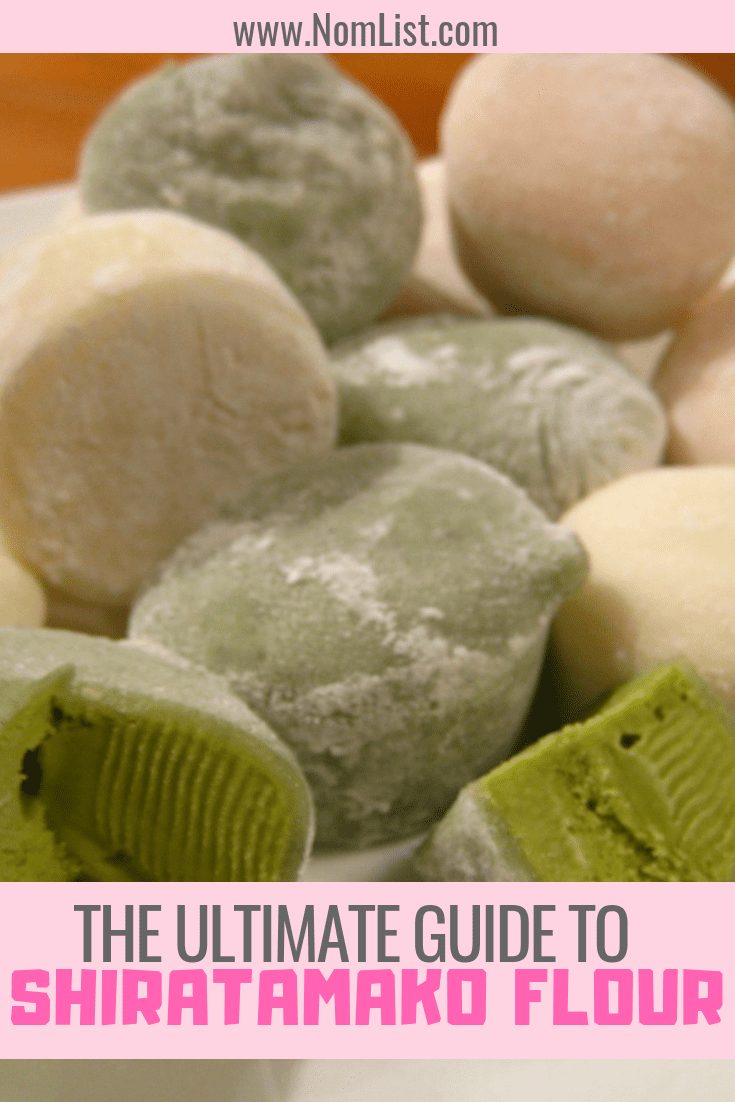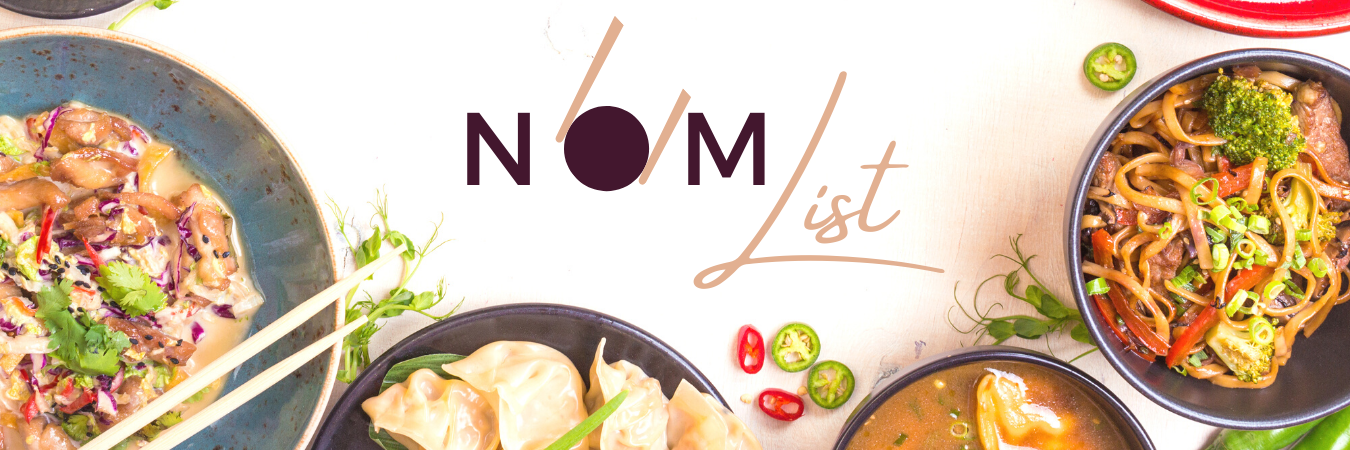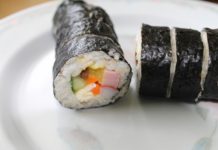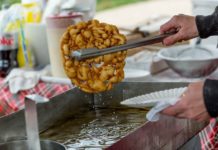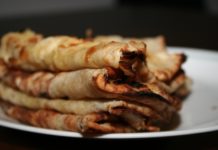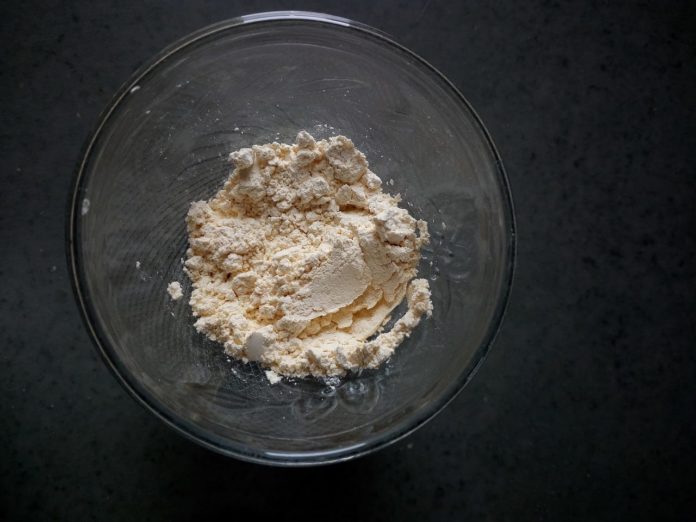
Ever had a Japanese pastry? If you have, you noticed that it’s quite different from typical American pastries. It’s not cakey and it’s not flaky. It’s actually pretty doughy and chewy. How do you make dough like that? Well, you can’t use white flour. You have to use Shiratamako flour which is almost exclusively made in Japan.
Shiratamako is a type of sweet or glutinous rice flour. It’s used specifically to make Japanese sweets. Unlike white flour or wheat flour, Shiratamako flour when made into dough is actually “chewy and gooey.” It is similar to Mochiko but the texture is not quite the same. In fact there are other types of rice flours but if you want to make genuine Shiratamako Dango, you’re going to want to use the right stuff – Shiratamako flour!
Shiratamako vs Mochiko
Mochiko and Shiratamako are similar which is why you’ll see them sometimes used interchangeably in recipes. That’s because Mochiko is easier to find than authentic Shiratamako flour. Yet there is a noticeable difference between the two.
For one, the rice grains used to make Shiratamako and Mochiko flour is different than those used to make other glutinous rice flours. Other glutinous flours use long grain Japanese rice. Shiratamako flour on the other hand is made using short grain Japanese rice.
Though both are glutinous (meaning sticky – not full of gluten) short grain rice flours, when you knead them and when you cook them, they come out differently. For example, when you use Mochiko to make Mochi – a popular Japanese pastry – it will not be as bouncy in texture or as smooth. You have to knead it longer too because it takes longer for the water to dissolve into the flour. Plus the dough turns out grainier.
On the other hand, if you want to make the perfect Mochi, you are going to want to use Shiratamako. It gives your pastries a doughy texture that is elastic and smooth. The flavor is quite different too. When cooled, Mochi made with Mochiko hardens whereas Mochi made with Shiratamako flour stays soft and buoyant.
There are other glutinous flours that you could use, but it won’t taste or feel right. The dough will come out sticky and chewy; more similar to sticky rice balls. Why would you skimp? Because Mochiko is much easier to find at any Asian grocery and costs half as much as Shiratamako, which typically has to be ordered online from Japan for about $4 for five ounces.
Cooking with Shiratamako Flour
Literally translated, Shiratamako means “white jade powder.” Maybe that’s because of the way the flour looks when it’s processed. Shiratamako looks different from other rice flours when you buy it because the process to make it is different from other glutinous rice flours.
Shiratamako Flour Processing
Mochiko goes through a simple process. The rice is washed, dehydrated, and then pulverized until it turns into a fine powder. Shiratamako goes through a much more involved process using what is called the “wet-meal-method.” It’s why it costs more than Mochiko.
First it is washed but then it is soaked. Next it is ground in water until it is fine. Then it is pressed so that all the water is squeezed out of it. It’s then dried and crushed so that the flour is coarsened into little flour granules, making it coarser and grainier in flour form than Mochiko—it’s only once you add the water that they switch places.
Recipes Using Shiratamako Flour
We cannot stress enough how important it is to use real rice flour to make Japanese confectionary. You cannot use other flours like wheat or other grains – your dessert will be ruined! In other words, don’t try any of these recipes with any old bag of flour you have in your pantry. Spring for real authentic Shiratamako flour and then try your hand at one of these favorite Japanese sweet treats:
1. Shiratamako Dango – One of the most popular Japanese treats, Shiratamako Dango doesn’t take long to make. Here is a kickass recipe for two different kinds of Dango: Tofu Dango and Hanami Dango.
2. Mochi Ice Cream – If you love Mochi or want to try it, why not try Mochi ice cream? Here is an awesome recipe to make it using, of course, Shiratamako flour.
3. Wakaayu a.k.a. Wagashi – Another popular sweet treat in Japan is traditional Wakaayu made with Shiratamako flour. This recipe requires only a few ingredients and a little bit of time to make.
Where to Buy Shiratamako Flour
Frankly, Shiratamako flour is hard to find here in America. However, thanks to ye olde internet, you can buy it even if you don’t have an Asian grocery store near you. In fact, not many Asian grocers even carry Shiratamako flour. Never fear – we found two different types of the stuff that you can buy right now online!
Most Authentic Shiratamako Flour
When you’re looking for authentic Asian foods, the best place to go is Rakuten.com. For less than $4.50 or ¥489 you can get 120 grams of authentic Shiratamako flour from Kyoto Uzumasa Shizenmura . This rice powder is grown in Japan and is produced using a traditional method called Mizubiki which dregs more water out leaving a purer amount of starch in the flour.
Best Bargain for Sweet Rice Flour (on Amazon)
If you are looking for a substitute, we found some sweet glutinous rice flour from Erawan, available on Amazon. You get two pounds of rice flour but it is not authentic Shiratamako. It is actually produced in Thailand. It works great for other Japanese sweet treats, but if you are trying to make Dango or rice balls, stick with the Shiratamako.
The Best Substitutes for Shiratamako Flour
There are ways to create a sort of Shiratamako flour using Mochiko. Just add a teaspoon of potato, corn, or tapioca starch to the mix and use less water than you would with Shiratamako to make Dango. Be careful though when experimenting with other glutinous flours. The texture is the thing and even using a Mochiko substitute you could miss the mark. You may have to make several attempts before you get it just right using a substitute.
